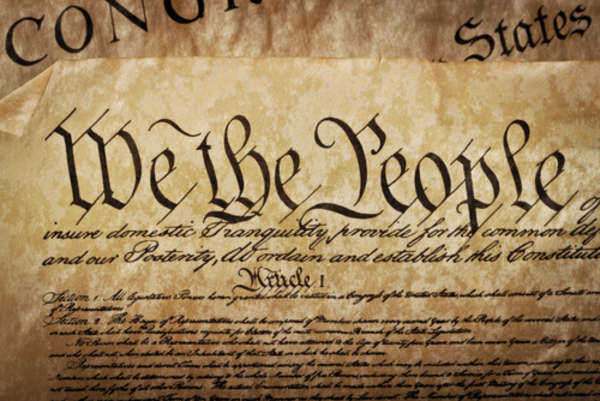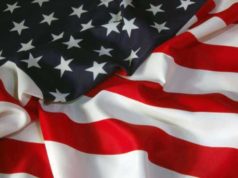
Introduction
The United States presidential election of 1876 was one of the most controversial and disputed elections in American history. The election was marked by allegations of fraud, intimidation, and violence, and resulted in an Electoral College dispute that nearly plunged the nation into a constitutional crisis. In this article, we will explore the election of 1876, its significance, and its impact on American history.
Historical Context
The United States was still recovering from the aftermath of the Civil War and Reconstruction in 1876. Reconstruction had officially ended in 1877, but the country was still grappling with the effects of the war, including racial tensions and political unrest. The election of 1876 was a pivotal moment in American history, as it signaled the end of Reconstruction and the beginning of a new era in American politics.
The Candidates
The election of 1876 pitted the Republican candidate Rutherford B. Hayes against the Democratic candidate Samuel Tilden. Hayes was the governor of Ohio, known for his moderate views and commitment to civil service reform. Tilden was the governor of New York, considered one of the most prominent Democrats of his time. He was known for his opposition to corruption and his advocacy for civil service reform.
The Campaign
The campaign was one of the most divisive in American history, with allegations of fraud and voter suppression on both sides. Democrats accused Republicans of using intimidation tactics, while Republicans accused Democrats of stuffing ballot boxes and counting fraudulent votes. Both parties campaigned vigorously, with Hayes and Tilden both traveling across the country to rally support.
The Results
On Election Day, November 7th, 1876, Tilden won the popular vote by a significant margin, receiving 4,284,020 votes to Hayes’s 4,036,298 votes. However, the Electoral College vote was much closer, with Tilden receiving 184 votes and Hayes receiving 165 votes. Twenty electoral votes were in dispute from four states:
Florida, Louisiana, South Carolina, and Oregon.
The Disputed Electoral Votes
The election of 1876 was marked by intense controversy and allegations of electoral fraud. The disputed electoral votes came from Florida, Louisiana, South Carolina, and Oregon, all of which had reported irregularities in their vote counting. Florida, Louisiana, and South Carolina were still under Reconstruction governments, and there were reports of voter suppression and intimidation tactics used against African American voters.
The Dispute
The dispute over the disputed electoral votes dragged on for months, with both parties accusing each other of fraud and manipulation. Democrats claimed that Republicans had rigged the vote counts in three southern states, with accusations of violence and intimidation against African American voters.
Republicans, in turn, accused Democrats of attempting to “steal” the election by stuffing ballot boxes and intimidating Republican voters. The dispute went to a special Electoral Commission, which was composed of five members each from the Senate, House of Representatives, and Supreme Court.
The Commission
The Electoral Commission was created on January 29th, 1877, to resolve the dispute over the disputed electoral votes. The Commission consisted of five representatives from the Senate, five from the House of Representatives, and five from the Supreme Court, with a total of fifteen members.
The Commission was tasked with investigating the allegations of electoral fraud and determining the validity of the disputed votes. The Commission ultimately voted 8-7 in favor of Hayes, awarding him all of the disputed electoral votes and giving him a total of 185 electoral votes to Tilden’s 184.
Impact on American History
The election of 1876 had significant repercussions for American history and politics. The outcome of the election cemented the end of Reconstruction in the South, as Hayes agreed to withdraw federal troops from the region in exchange for Democratic support of his presidency.
The decision of the Electoral Commission also highlighted the potential flaws and vulnerabilities of the Electoral College system. The Commission’s decision to award the disputed electoral votes to Hayes was controversial and led to calls for reform of the Electoral College.
Conclusion
The election of 1876 was a pivotal moment in American history and politics, marked by controversy, fraud, and disputed electoral votes. The election highlighted the deep political divisions and tensions that still existed in the country after the Civil War and the challenges of reconciling the southern states into the Union. The election ultimately had significant consequences for American politics and governance, cementing the end of Reconstruction in the South and exposing the potential flaws of the Electoral College system.
The election of 1876 was between Rutherford Hayes, a Republican from Ohio, and Samuel J. Tilden, a Democrat from New York. The election was the very first to have involved a candidate winning the popular vote, but losing the election by not having enough votes from electors.
The election was disputed for more than just this reason, however, as it was an election in which several of the states had disputed electoral votes, and as such, when Rutherford Hayes finally won, it was only after a long bout of arguments and legal struggles.
Part of the dispute surrounding the election arose from the nature of this particular election. Though neither Samuel J. Tilden nor Rutherford Hayes genuinely participated in the campaigning process, each one’s side slowly began to use blatantly inflammatory and vicious tactics in attempting to win the electors’ votes. Each side attacked the other candidate personally, making the race more disputed by its very nature.
Then, in the actual vote, Samuel J. Tilden appeared to have won the popular vote, at least, with 4,288,546 votes to Rutherford Hayes receiving 4,034,311 votes. But regardless of this, the votes of the electors were what mattered, and unfortunately there the victor was not as obvious. Tilden had only 184 votes, not enough to actually win an absolute majority at 185 votes from the electors. Rutherford Hayes had significantly fewer votes, but this was in part because four states had actually not cast their votes yet, as they had each had disputed elections. Between these four states, there were 20 more electoral votes, which was enough to put Hayes over the top to beat Tilden.
Out of the four states of Oregon, South Carolina, Louisiana, and Florida, Oregon’s vote was decided most quickly in favor of Rutherford Hayes. But the electors of the other states remained undetermined, as each of the three remaining states had actually sent two sets of results to the Federal Government. One set of results said that Rutherford Hayes won, and the other set of results said that Samuel J. Tilden won. With two different sets of results, the dispute became which one was correct, and until that could be determined, the electors could not cast their votes and the presidential election would remain undecided.
Adding further complication, the Federal Government’s response to this situation was to appoint the Electoral Commission to determine which results were accurate. The Electoral Commission had 7 Republicans who would support Rutherford Hayes and 7 Democrats who would support Samuel J. Tilden. It also had a single Republican Supreme Court Justice. Each member of the committee voted along party lines, and as a result, Rutherford Hayes was elected President.
The final result concerning the electors as judged by the Electoral Commission went undisputed by the Democrats, but only because the Democrats and the Republicans had actually compromised outside of the election and had agreed on certain terms in exchange for Rutherford Hayes getting the Presidency. This meant that the election was considered fraudulent and shady. But the terms went undisputed and Rutherford Hayes became President.
The legacy of the election was evidence that one did not have to win the popular vote to win the votes of the electors and still become President, as well as a legacy of election scandal and dispute which would continue down into modern times.


























